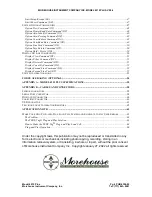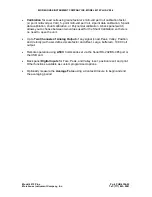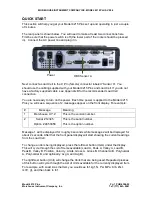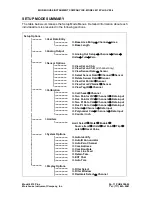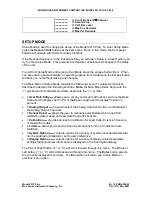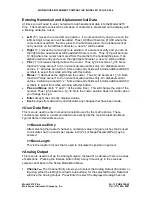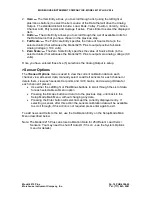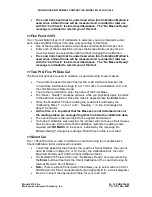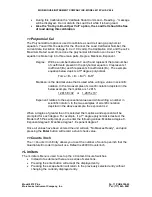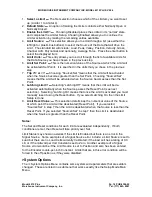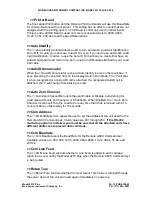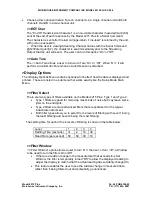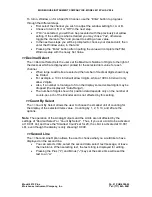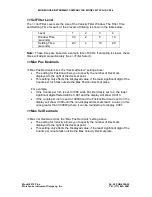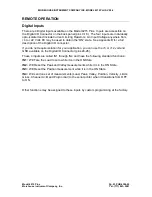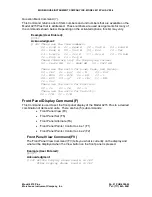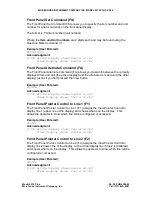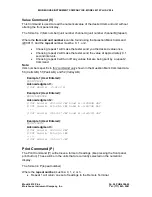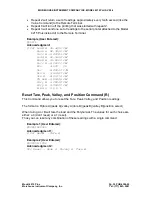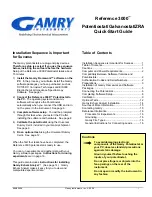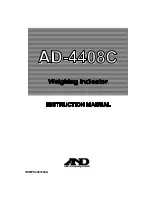
MOREHOUSE INSTRUMENT COMPANY INC. MODEL 4215 PLUS V5.0.6
Model 4215 Plus
Pg. 15 PUB.6396-02
Morehouse Instrument Company, Inc.
Tel: (717) 843–0081
>Calibration
This menu is used to access all methods of Calibration that are supported by the Model
4215 Plus.
•
Selecting “Calibration” from the Setup Mode Main Menu will bring up a submenu.
•
The submenu is used exactly like the Main Menu.
•
Press left/right or plus/minus to change the Menu Item.
•
Press the Escape Button to return to the Setup Mode Main Menu.
•
Press the Enter Button to select the displayed menu Item.
If you are re-calibrating a Load Cell, the Model 4215 will recognize it using either the
Auto-ID or a manually entered Serial number.
•
Any time you overwrite existing Load Cell Calibration Data, you will first be
warned with the “Overwrite data?” message.
•
Pressing the Enter Button will begin the overwriting process.
•
Pressing the Escape Button will cancel the calibration, voiding any changes that
have been made.
•
Another method to avoid overwriting existing data is to delete the Sensor first and
then Calibrate.
If a Load Cell with a new serial number (or new Auto-ID) is calibrated, the data is added
as a new entry in the Load Cell list.
>>Cal Check
Selecting the >>Cal Check will present you with a channel selection of either A or B.
once a channel is selected is will automatically begin running a Calibration Check on
the Load Cell / Sensor attached to Channel specified.
•
The Model 4215 Plus will measure the Shunt Value of the Load Cell and
compare it to the Shunt Value that was recorded when the Load Cell was last
calibrated.
•
The last Calibration Date for the Load Cell is displayed followed by the
currently measured Shunt Value and the Shunt Value that was recorded
when the Load Cell was calibrated.
Note:
The Model 4215 Plus has a switch on the back panel that allows you to select
either a 30K Shunt or a 60K Shunt. Be sure that this switch is set correctly for the
Load Cell that you are using.
Note: Since this Shunt Check electronically applies approximately half the
Rated Load, it is important that the Load Cell / Sensor is not loaded when this
check is run. If you see the “Cell Overloaded” message, remove any load on
the cell and try the check again.
>>Two Point mV/V
Using >>Two Point mV/V will calibrate a Load Cell using the manufacturer’s Milli-Volt
per Volt Calibration Factor or a series of Milli-Volt per Volt Points with corresponding
Masses (usually listed on the Load Cell Calibration Certificate).
•
You will be asked for the Channel, the Cell Serial Number, the current date,
excitation level (5.0 or 10.0 volts), the Calibration Unit, the Load Cell’s
Maximum Rated Load, and the mV/V calibration constant.




